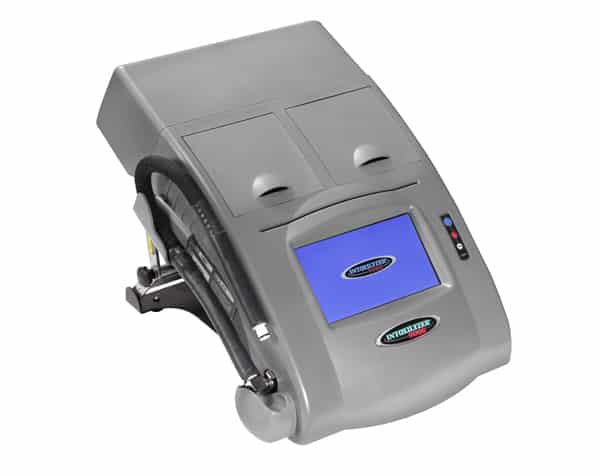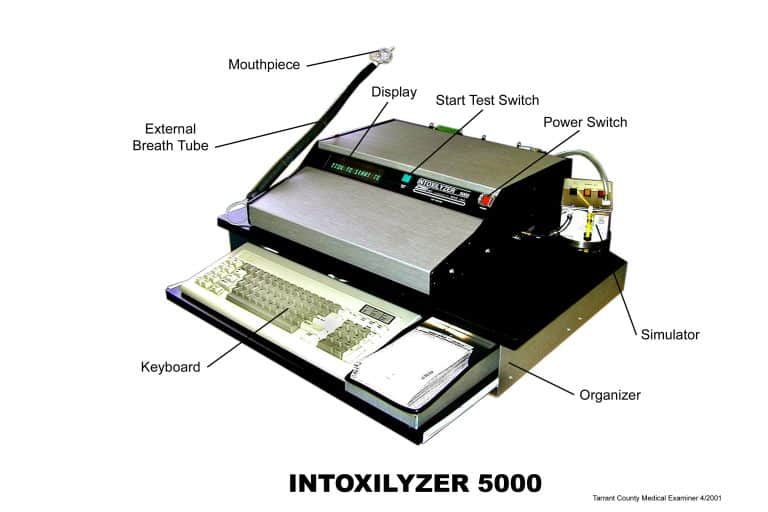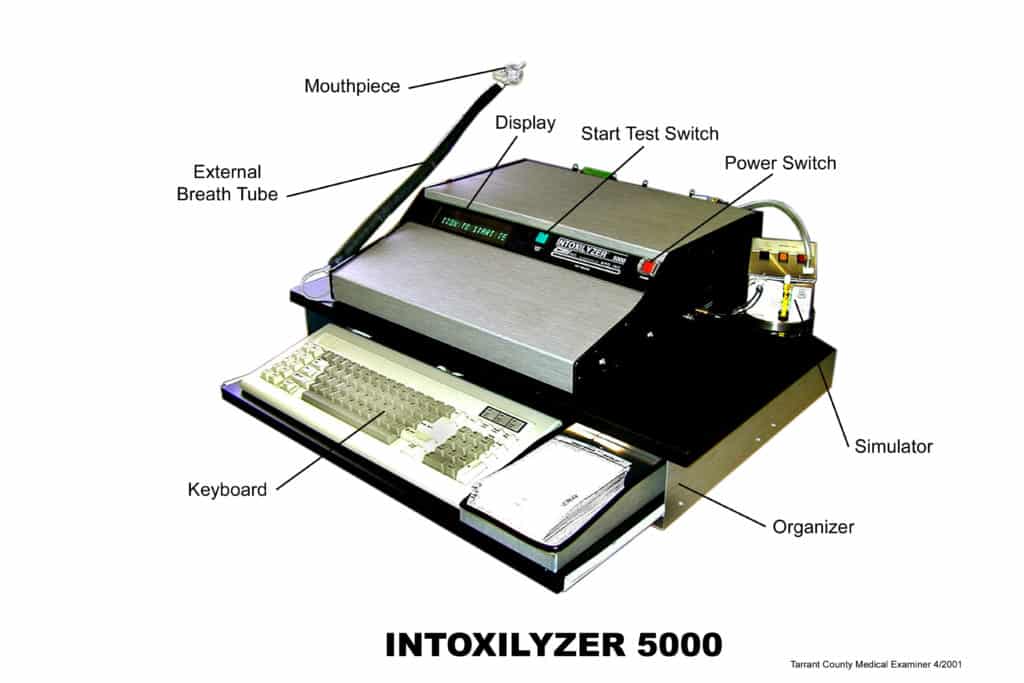What is the Intoxilyzer 9000?
Texas is currently replacing the Intoxilyzer 5000 EN and transitioning to the Intoxilyzer 9000 for breath alcohol testing.
According to the manufacturer, the device works on the basis of infrared light absorption by alcohol detected in a person’s breath.

According to the manufacturer and the Texas Department of Public Safety (DPS), the device subtracts the amount of light absorbed from the person’s alcohol breath sample, compares that amount with the amount of light originally introduced by the device into its testing chamber, and prints the difference as a test result.
Intoxilyzer 9000 Flaws
The theory is that the alcohol molecules block/absorb a certain amount of light which results in a less light getting through to the detector.
The machine computes the reduced amount light caused by the alcohol molecules.
The Intoxlyzer 9000 is neither perfect nor expensive (@$7,600).
Moreover the machine is not warranted to be accurate nor reliable for human testing.
Rather, it’s warranted to be able to analyze a reference sample solution provided by the manufacturer.
This simulator and solution can be loosely described as a heated peanut butter jar with alcohol/water mixture with air on top.
It does not accurately or reliably replicate human lung function.
There are many natural interferences in a person’s breath that may also block infrared light.
For example, moisture, acetone (a natural occurring substance produced by people on low-carbohydrate diets), ketones and tobacco smoke.
Intoxilyzer 9000 delayed
The DPS’s Breath Alcohol Testing Program has delayed the implementation of the Intoxilyzer 9000, which was originally scheduled for forensic evidential use in summer 2015.
Much is already known, from use in other states, about the Intoxilyzer 9000’s deficiencies. An experienced DWI lawyer can educate the court and a jury about the deficiencies of the machine’s accuracy and reliability.
Additionally, there are certain upgrades that have been included in the Intoxilyzer 9000 that DPS has chosen not to include in the models it uses for the citizens of the state of Texas.
The Intoxilyzer 9000 includes the capabilities to print a histogram that shows a subject’s breath flow, volume, and duration during a blow.
The histogram can aid in determining whether a test is contaminated by mouth alcohol.
By allowing review, both the defense and the state can determine whether there was sufficient slope in a sample.
Both Colorado and Georgia are providing this safeguard to their citizens, but DPS has demonstrated that it doesn’t believe the citizens of the state of Texas deserve the same protection.
TELL US ABOUT YOUR CASE
Form Submissions have a fast response time. Request your free consultation to discuss your case with one of our attorneys over the phone. The use of this form does not establish an attorney-client relationship.
The information on this website is for general information purposes only. Nothing on this site should be taken as legal advice for any individual case or situation. This information is not intended to create, and receipt or viewing does not constitute, an attorney-client relationship.




